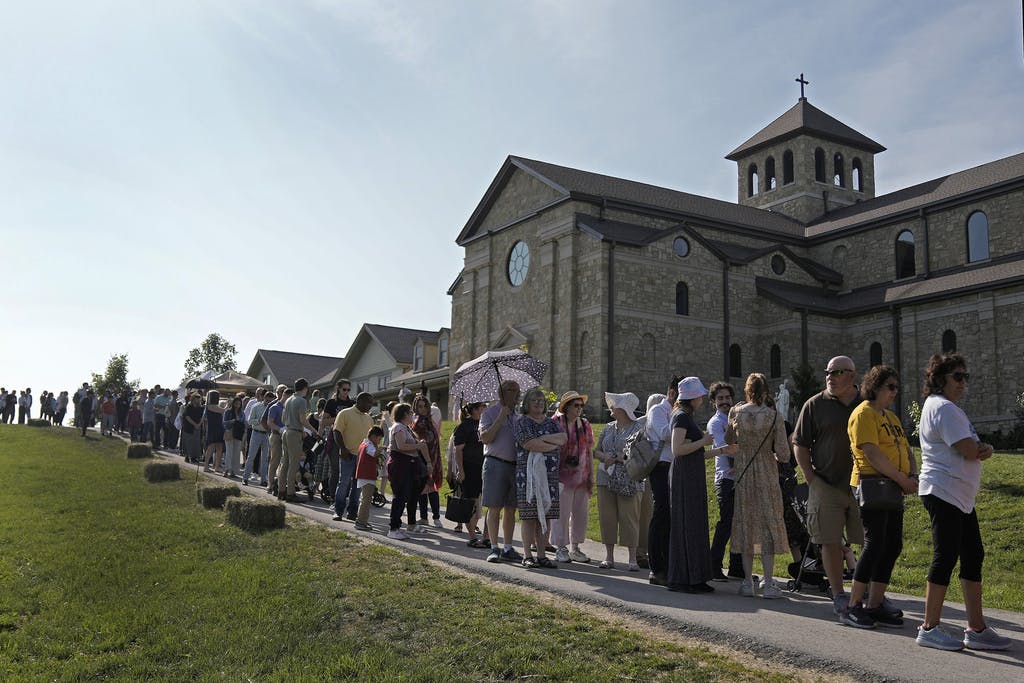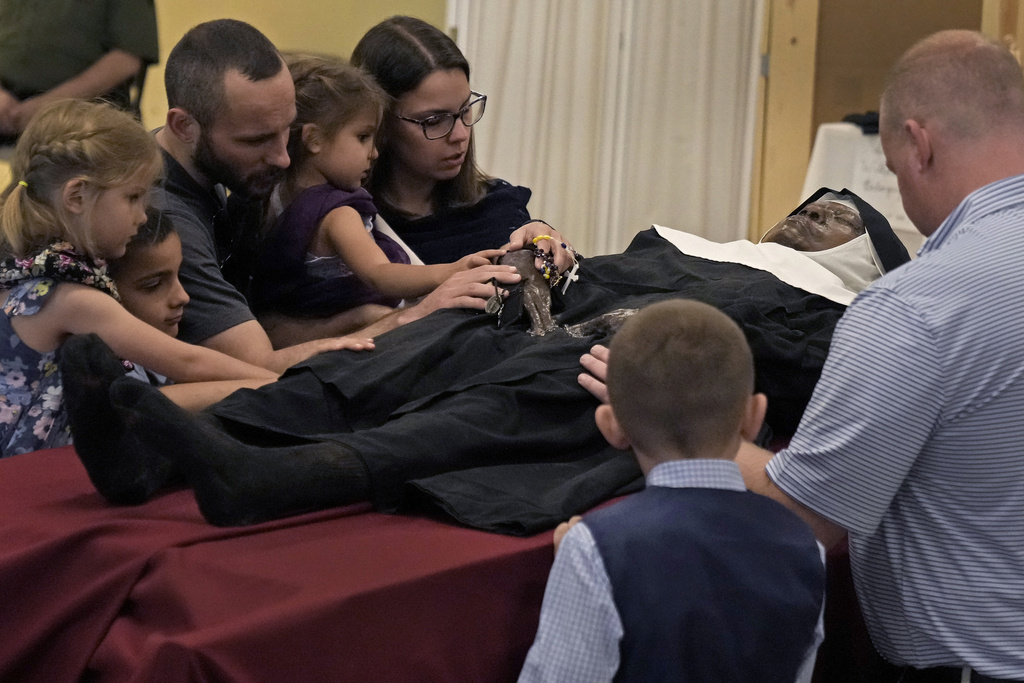Remarkable Preservation of Nun’s Remains Likely Due to Natural Mummification, Scientists Say, Even as Faithful Throng To See, Touch Body
Thousands of worshipers have been streaming into an abbey in rural Missouri to marvel at Sister Wilhelmina, as calls rise for the Church to investigate if she is a saint.

As thousands of faithful queue outside a Benedictine abbey in rural Missouri to see – and in recent days, touch – the “miraculous” body of a nun that has barely decomposed since 2019, forensic anthropologists say the highly-preserved state of the corpse is likely due to natural mummification and not at all unusual.
People from all across the country have been traveling to the Abbey of the Benedictines of Mary, Queen of Apostles, outside of Gower, Missouri, to see the well-preserved body of the founder, Sister Wilhelmina, who died in 2019 at age 95.
Her body had been disinterred in order to move her grave to a new location. Since the seemingly well-preserved body came to light, people of all ages kneeled in front of the nun while they touched her hands and placed rosary beads on her body, photojournalist Karen Pulfer Focht captured.
Many worshipers believe the body’s preservation could have a religious meaning, such as a sign that Sister Wilhelmina is a saint, but forensic anthropologists differ.
Decomposition is “highly variable” and depends on several factors, a professor of Anatomy and Board-Certified Forensic Anthropologist at Des Moines University, Heather Garvin, tells the Sun. Based on pictures Ms. Garvin saw online, she notes that the hands look “somewhat mummified,” which is normal. “Once mummified, tissue can preserve for a long time,” she says.
Sister Wilhelmina was not embalmed, church officials say. Yet factors that could have contributed to the natural mummification of the nun’s remains include pre-burial preparations, such as if there was anything applied to the body, clothing, the depth of the burial, and if the enclosure of it protected the body from environmental factors, Ms. Garvin adds.
It’s hard to determine how common it is for a body to remain in this condition because they “are rarely exhumed after burial,” an associate professor and director of Forensic Anthropology at Western Carolina University, Nicholas Passalacqua, told CNN. Yet, there are other famous cases of preserved bodies, he adds, which occur because they were in environments with low oxygen that limited bacterial growth.
The body of Sister Wilhelmina was exhumed in April, according to a statement from the Benedictines of Mary, Queen of Apostles. They were told “to expect bones in the highly moist clay of Missouri,” as she was buried in a wooden coffin without embalming.
“Nevertheless, the discovery of what appeared to be an intact body and a perfectly preserved religious habit created an unexpected twist to our plans,” the statement said. It also added they had had no intent to make the discovery public, but news spread amid a leak of a private email.
The abbey said their daily life has remained “unaffected” and is not being disrupted by visitors. Volunteers and local law enforcement are helping the institution manage the crowds, the statement says. They allow the nuns to continue their lives in peace, “while granting the visitors a pleasant and prayerful experience at the Abbey.”
Until Monday, visitors were allowed to touch the body as it was displayed in the basement of the abbey’s church. Yet, since then, the body was placed in a glass shrine in the church. Visitors are still able to see the body and grab dirt from the grave.

Sister Wilhelmina was born in St. Louis in 1924 under the name Mary Elizabeth Lancaster. She took the name Wilhelmina when she made her vows. In 1995, at 70, she founded the Benedictines of Mary Queen of Apostles.
The abbey also addressed questions regarding the process for canonization of Sister Wilhelmina under the Roman Catholic Church. While exhuming the relics of a person is part of the procedure for opening the causes of saints, “this is not the case,” the statement said. They added they are “seeking advice” to open the case in the future, but will wait the required minimum of five years after death to begin the process.
“Initial statements regarding Sister’s extraordinary physical state have already been procured, but we acknowledge that further studies must be done later, in an official capacity,” the statement said. “While we can attest to Sister’s personal sanctity, we know that incorruptibility is not among the official signs taken by the Church as a miracle for sainthood.”
The Diocese of Kansas City-St. Joseph also released a statement saying that while the remains of Sister Wilhelmina Lancaster have generated interest and raised questions, it is also important to protect the “mortal remains” of the nun for the investigation.
“It is understandable that many would be driven by faith and devotion to see the mortal remains of Sister Wilhelmina given the remarkable condition of her body,” the statement said. “But visitors should not touch or venerate her body, or treat them as relics.”
Yet despite these scientific doubts over the “sanctity” of Sister Wilhelmina, people from Mexico, Canada, and all across America keep streaming in, the Clinton County sheriff, Larry Fish, said in a Facebook video. Last weekend, officials estimated that 10 thousand to 15 thousand people worshiped the site.

